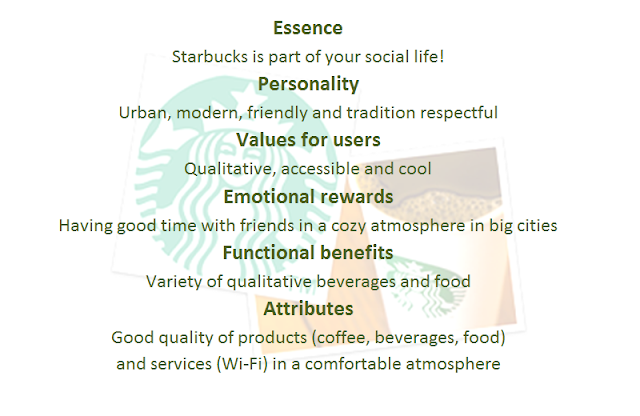Author: Anna N
Because
brands are more than just a name and a logo, getting to precisely what people
understand by a brand can be difficult, particularly once you are into the
emotional content of the brand. One very common technique for assessing a brand
is “personification” - imagining the brand is a person and then trying to
describe that person. According to the recent survey, provided by the author of this article
among the people from 23 to 35
in Russia,
France, Belgium, UK,
Georgia, China, Morocco
and Germany,
Starbucks brand has a very strong personality in the consumers’ mind. Being
asked “Thinking of Starbucks as a person, what type of person is it?”, the
respondents gave very specific and descriptive answers. However, they were
different at some points, but still this variety of answers allows to make a
very concrete “portrait” of a Starbucks brand. In terms of
the gender half of the respondents said it is a male, 5% – female, the rest –
no concrete gender. As for the age overwhelming majority mentioned that he is
young, at the same time 20% marked the age of 30 or around it, 12% – below 30,
10% – within a scale from 20 to 40, 7% – more than 40.
Among the
most popular characteristics prevailing were the positive ones:
- Stylish /
Modern / Trendy / Good looking / Elegant / Fashionable / Good taste
- Smart
- Active /
Dynamic / Busy
- Open-minded
- Creative
- Positive /
humorous / funny
- Communicative /
friendly / social
Also we could meet such descriptions, like easygoing, cheerful, wealthy,
polite, independent, free, rich, urban. However, rather negative descriptions could be met, like snobbish,
greedy, superficial, a bit stupid. Some respondents gave really detailed and complete portraits of a Starbucks
person:
«Guy,below 30, hipster, travels a lot, tends more to
home parties than clubbing, can cook complicated dishes, single, has dog, able
to paint»
«A smart bad guy around 35 who is perfectly aware of
how to sell simple things like coffee for ridiculous prices to a shallow young
ladies imagining themselves being Carrie Bradshaw»
«A male person in the 30ies from a fancy district of
town and in love with himself»
«20-35, disregarding gender, this person has an iPhone
or dreams about an iPhone or any other apple product, probably dreams to live in
New York, has seen series "Friends" not once, probably most of
seasons, likes yoga or light fitness, probably think about environment to
"think modern" even if he/she doesn't care much. However, this person
probably has good imagination, designer skills, good at communication - lives
at twitter and facebook»
«20-45 employee, last year student, freelancer, expat,
American, the one, who wants coffee and
sandwich quickly, the one, who likes cheesecakes for the atmosphere of
Christmas and for wi-fi»
«Probably male; late 30s; audi-driver, likes modern
neutral style, clean, non-threatening, relaxed but professional and proficient»
«40 years old man.
Mean, but trying to look generous. Wears green scarf»





















